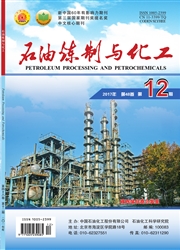

 中文摘要:
中文摘要:
在循环流化床冷模实验装置上,分别调节提升管内表观气速和回料管上阀门开度,测量并分析了颗粒过阀压差脉动特性及其对提升管内压力脉动的影响。结果表明:随着提升管内表观气速的降低或阀门开度的增加,颗粒过阀依次会呈现股状出料和连续出料两种形式;股状出料时颗粒过阀的压差脉动标准偏差较大,呈单主频特性,主频在0.35Hz左右;连续出料时颗粒过阀的压差脉动标准偏差相对较小,呈双主频特性,分别对应0.35Hz和2.5Hz左右,其中2.5Hz主频能量相对较大。颗粒过阀压差脉动直接影响提升管内压力脉动行为,在提升管下部较为明显,提升管内压力脉动主频与颗粒过阀压差脉动主频分布相同。
 英文摘要:
英文摘要:
In a circulating fluidized bed cold model experiment device,the differential pressure fluctuation features and its influence on pressure fluctuation inside the riser when the particles flow through valve were measured and analyzed,by adjusting the superficial gas velocity in the riser and valve of feed returning pipe. The experimental results show that with the decrease of the superficial gas velocity in the riser or the increase of the valve opening,the particles appear in the form of "stock discharge" and "continuous discharge" successively. The "stock discharge" causes larger standard deviation of the pressure difference pulsation of the valve and tends to a single dominant frequency, around 0.35 Hz. While the "continuous discharge" has a smaller standard deviation of the particles differential pressure fluctuation relatively and appears a double frequency,corresponding to 0.35 Hz and 2.5 Hz,and the late frequency has a higher energy. Differential pressure pulsation when the partials flow through the valve directly affects the pressure pulsation behavior inside the riser especially in the lower part of the riser, and their frequency distribution of the pulse is consistent.
 同期刊论文项目
同期刊论文项目
 同项目期刊论文
同项目期刊论文
 期刊信息
期刊信息
